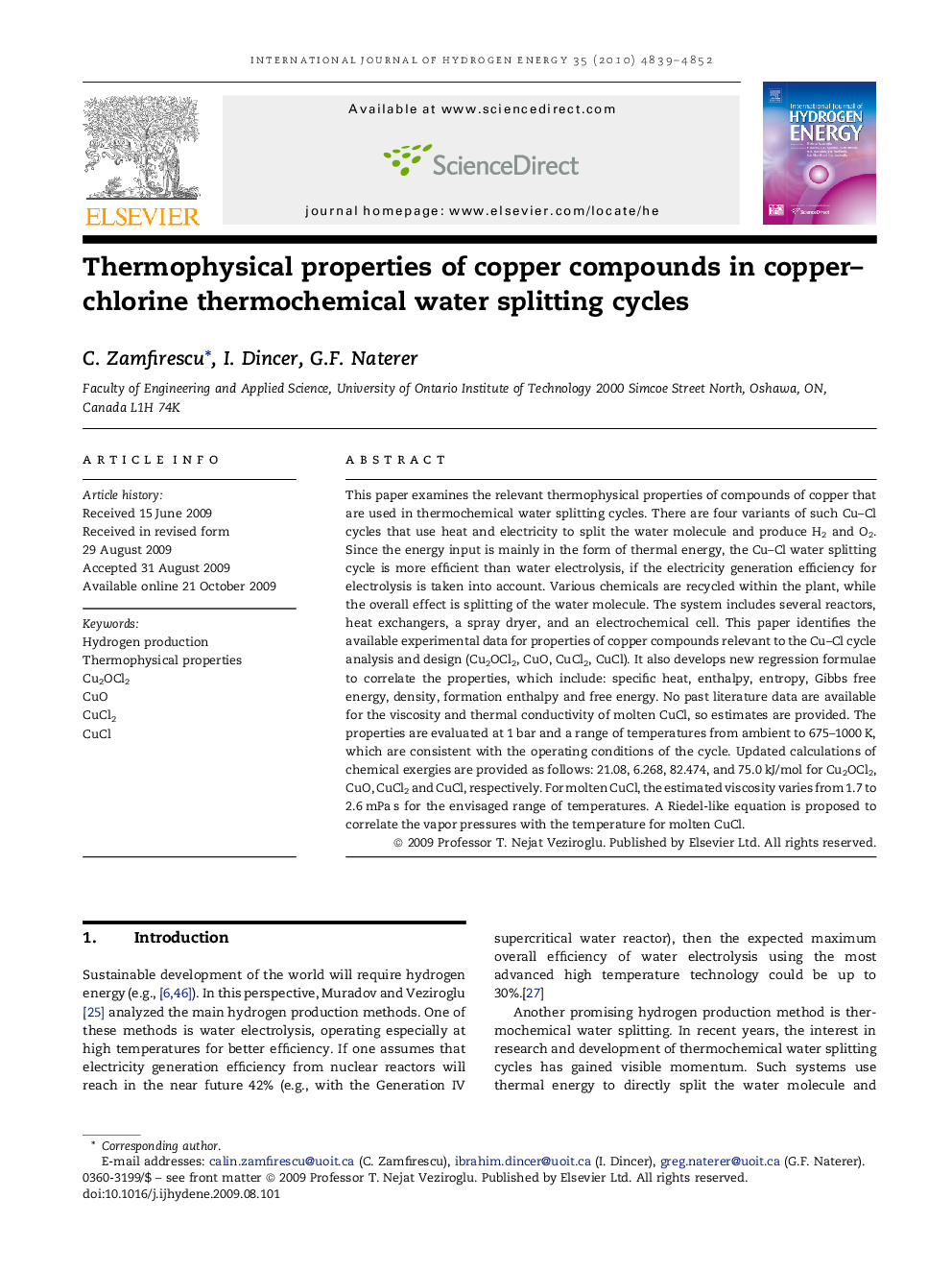| Article ID | Journal | Published Year | Pages | File Type |
|---|---|---|---|---|
| 1282828 | International Journal of Hydrogen Energy | 2010 | 14 Pages |
This paper examines the relevant thermophysical properties of compounds of copper that are used in thermochemical water splitting cycles. There are four variants of such Cu–Cl cycles that use heat and electricity to split the water molecule and produce H2 and O2. Since the energy input is mainly in the form of thermal energy, the Cu–Cl water splitting cycle is more efficient than water electrolysis, if the electricity generation efficiency for electrolysis is taken into account. Various chemicals are recycled within the plant, while the overall effect is splitting of the water molecule. The system includes several reactors, heat exchangers, a spray dryer, and an electrochemical cell. This paper identifies the available experimental data for properties of copper compounds relevant to the Cu–Cl cycle analysis and design (Cu2OCl2, CuO, CuCl2, CuCl). It also develops new regression formulae to correlate the properties, which include: specific heat, enthalpy, entropy, Gibbs free energy, density, formation enthalpy and free energy. No past literature data are available for the viscosity and thermal conductivity of molten CuCl, so estimates are provided. The properties are evaluated at 1 bar and a range of temperatures from ambient to 675–1000 K, which are consistent with the operating conditions of the cycle. Updated calculations of chemical exergies are provided as follows: 21.08, 6.268, 82.474, and 75.0 kJ/mol for Cu2OCl2, CuO, CuCl2 and CuCl, respectively. For molten CuCl, the estimated viscosity varies from 1.7 to 2.6 mPa s for the envisaged range of temperatures. A Riedel-like equation is proposed to correlate the vapor pressures with the temperature for molten CuCl.
